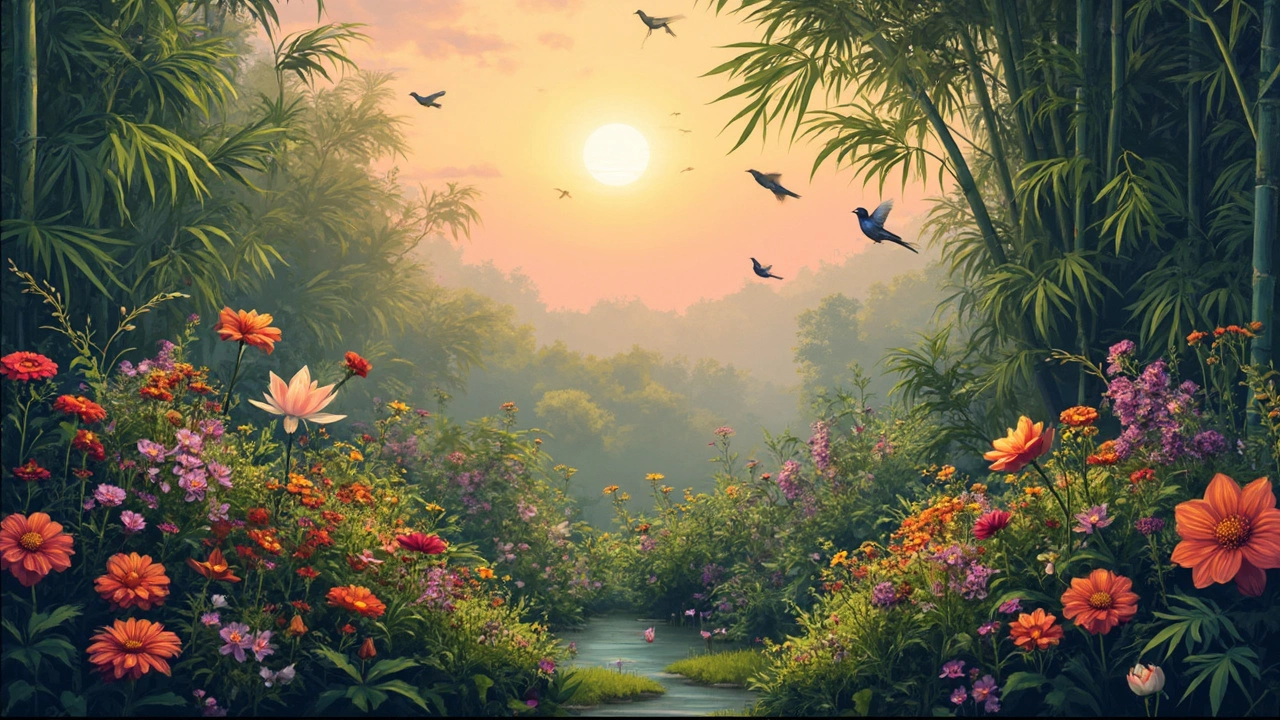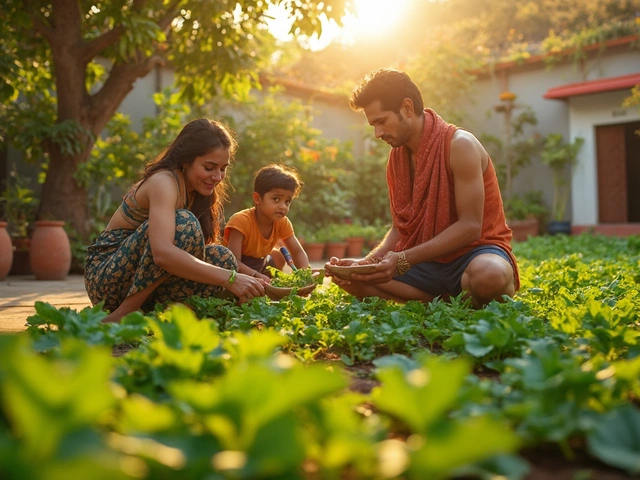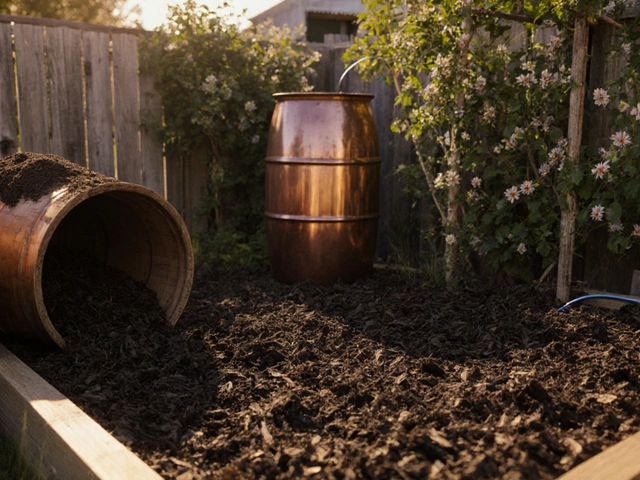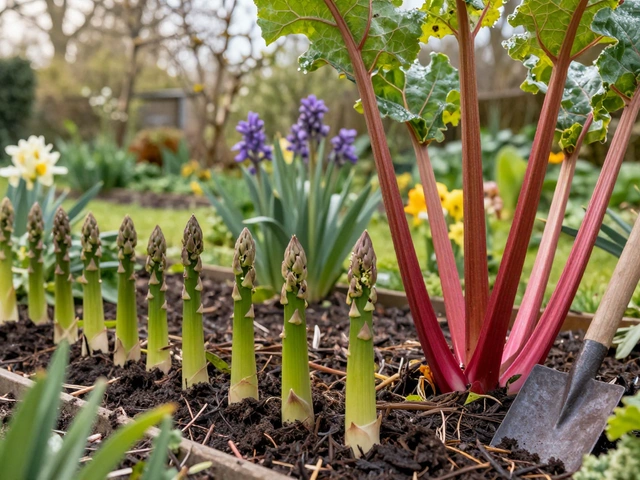Sustainable gardening is more than a buzzword—it's a way to make your green space beautiful and eco-friendly. By choosing the right plants, you can create a garden that thrives on its own. So, what plants should you consider? Let’s dig into some options that are both easy on you and kind to the planet.
First off, think about hardy perennials. These plants return year after year, needing little more than the occasional prune. They’re your garden’s low-maintenance best friends. Picture colorful lavender or resilient yarrow, bringing vibrancy with hardly any extra watering.
Next, why not embrace native plants? They’re already adapted to your local climate, meaning they require less water and attract beneficial wildlife—bees, butterflies, you name it. You’ll create a small ecosystem right in your backyard!
- The Perks of Sustainable Gardening
- Hardy Perennials for Low Maintenance
- Embracing Native Plants
- Edible Options for Your Garden
- Tips for a Greener Garden
The Perks of Sustainable Gardening
Embracing sustainable gardening isn’t just about hopping on the eco-friendly trend train. It’s about creating a space that supports the environment while saving you time and money. So, what perks do you get by going sustainable?
Less Water, More Savings
Watering a traditional garden can sound like an endless chore, especially when it's dry outside. When you choose sustainable gardening, you select plants like succulents or native species that naturally require less water. This means fewer water bills and less guilt about using up precious resources. It's a win-win!
Boost Local Biodiversity
A sustainable garden welcomes native plants and wildlife. When your garden is full of native plants, you’re basically rolling out the red carpet for local pollinators. Bees, butterflies, and birds do the happy dance, helped along by your choice of flora.
“Choosing native plants can have a huge impact on local ecosystems, bringing back the birds and the bees in no time.” — David Smith, Environmental Biologist.
Cut Down on Chemical Use
Sustainable gardening means fewer pesticides and fertilizers. Opt for plants that naturally resist pests and grow well in your soil. It leads to healthier plants and a cleaner environment. Think of it as your garden's detox.
Long-Term Savings
Initial costs can be a bit iffy, but think long-term. With low maintenance plants, less water, and fewer chemicals, the savings add up over time. It’s like a little investment for your future self.
Climate Change Mitigation
Plants absorb carbon dioxide and produce oxygen—it’s basic science. More gardens mean less carbon in the air. You’re doing your bit to help tackle climate change. Every little bit helps, right?
In the end, sustainable gardening is all about balance. It’s about respecting nature while enjoying a lush, vibrant space—all without breaking too much sweat or cash. Sounds pretty fantastic, doesn’t it?
Hardy Perennials for Low Maintenance
If you're looking for a low maintenance way to keep your garden vibrant, hardy perennials should be at the top of your list. These plants are like the dependable friends who show up every season, ready to impress with minimal fuss. Once established, most of these plants can thrive with little water and care.
Why Choose Hardy Perennials?
Unlike annuals that require replanting each year, perennials come back without you lifting a finger, which saves time and resources. Plus, many perennials improve soil health and provide habitats for beneficial insects, making them perfect for a sustainable garden setup.
Top Picks for Your Garden
- Lavender: Known for its soothing scent and drought resistance, lavender is a must-have. It not only adds a pop of color but also attracts pollinators like bees.
- Yarrow: This tough plant thrives in various conditions and produces clusters of tiny flowers. It’s excellent for controlling soil erosion.
- Echinacea: Often called coneflowers, these are staunch survivors, attracting butterflies while resisting pests and diseases.
- Hosta: Ideal for shaded areas, hostas come in various leaf patterns and are super durable.
Planting and Care Tips
When it comes to planting, choose a sunny spot for most perennials (shade for hostas). Mix in some compost to enrich the soil, and give them a good soak initially to help roots establish. Once they’re comfortable, they’ll require minimal water, especially those adapted to dryer climates.
Regular pruning after blooming helps keep them in shape. This encourages new growth and often extends the blooming period, giving you more bang for your buck!
| Perennial | Optimal Conditions |
|---|---|
| Lavender | Full sun, well-drained soil |
| Yarrow | Full sun, adaptable soil |
| Echinacea | Full sun, moderate water |
| Hosta | Partial shade, moist soil |
By integrating hardy perennials into your garden, you’re setting yourself up for a sustainable space that’s both beautiful and low maintenance. It’s all about working smarter, not harder!
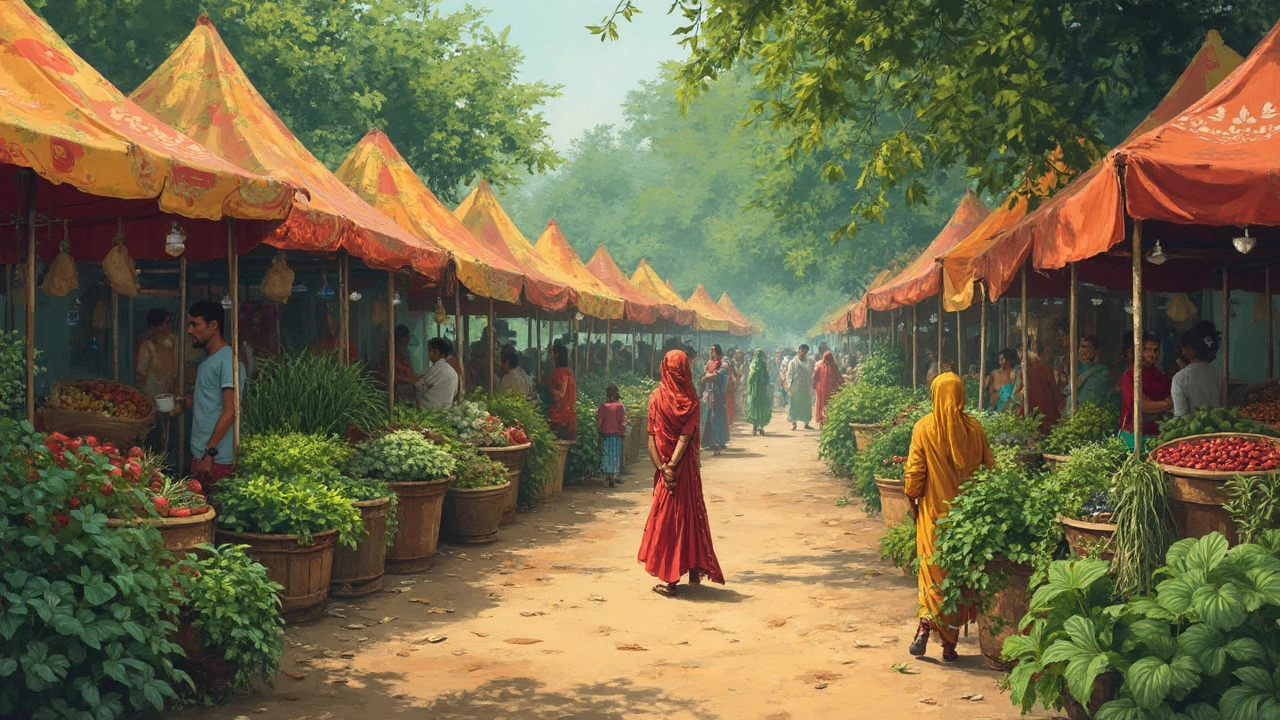
Embracing Native Plants
Diving into the world of native plants is like making new friends who already know the lay of the land. They fit right into your garden naturally because they’ve long been familiar with the local climate and soil. Choosing these for your sustainable garden isn’t just about making life easier for yourself; it’s about creating a thriving environment for local wildlife too.
Why Choose Native Plants?
First, let's talk water. Eco-friendly plants like natives are used to your neck of the woods, meaning they don’t demand lots of extra water. So if you're worried about water consumption, these plants offer peace of mind. Consider plants such as the English bluebell or the oxeye daisy in the UK—they're perfect partners for your sustainable gardening efforts.
Supporting Local Wildlife
Natives attract the local pollinators, like bees and butterflies. It’s a win-win: your garden flourishes and so does local biodiversity. Choose plants like the common foxglove or elderberry, which provide food for insects and birds. It’s like setting up a banquet in your backyard, but without the cleanup!
Low Maintenance Beauty
Another perk? They’re tough cookies. Since they’re already accustomed to local pests and weather, they fend for themselves much better than many exotic plants would. You spend less time worrying about plant health and more time enjoying the view.
How to Start with Native Plants
- Identify your region’s native plants. Local gardening groups or online resources can help if you’re stuck.
- Plan your garden. Think about sun and shade areas, and match plants accordingly.
- Source responsibly. Visit local nurseries that specialize in native flora.
So, ready to give natives a shot in your garden? Remember, each native plant you choose is a step toward achieving that sustainable gardening you’re aiming for. It’s practical, eco-friendly, and rewarding in all the best ways.
Edible Options for Your Garden
Let’s talk about the tastiest part of sustainable gardening—growing your grub! Planting edible options is not just rewarding but can also be super practical for anyone looking to go sustainable.
Top Picks for Your Edible Garden
When it comes to edible plants, variety is the spice of life. Start with the basics like tomatoes and cucumbers—they’re resilient and perfect for beginners. Plus, they grow in most climates, meaning you get fresh produce without much fuss.
- Tomatoes: These are a staple and grow in containers or soil. Best planted in sunny spots with rich, well-draining soil.
- Herbs: Basil, rosemary, and mint are some no-brainers for a fragrant garden. They’re perennial in many regions and practically thrive on neglect.
- Leafy Greens: Lettuces and kale are easy to grow and offer multiple harvests per season. This means fresh salads, all season long!
Berries for a Sweet Treat
For those with a bit more space, why not add berry bushes? Strawberries, raspberries, and blueberries are excellent for adding a little sweetness to your garden. They might take a couple of seasons to establish, but once they do, they’re pretty low maintenance.
If you’re looking at adding fruits, consider planting dwarf fruit trees. They provide abundant harvests without taking too much room. Apples and pears are great options, especially in cooler climates.
Benefits of Edible Gardening
Going edible isn’t just about delicious snacks. Growing your produce reduces the need for plastic packaging and avoids the carbon footprint of transporting goods. Plus, they attract local wildlife like bees and butterflies, helping with pollination and boosting biodiversity.
You’ll be surprised how this little change makes a big difference. And hey, nothing beats the taste of a sun-ripened tomato from your backyard!
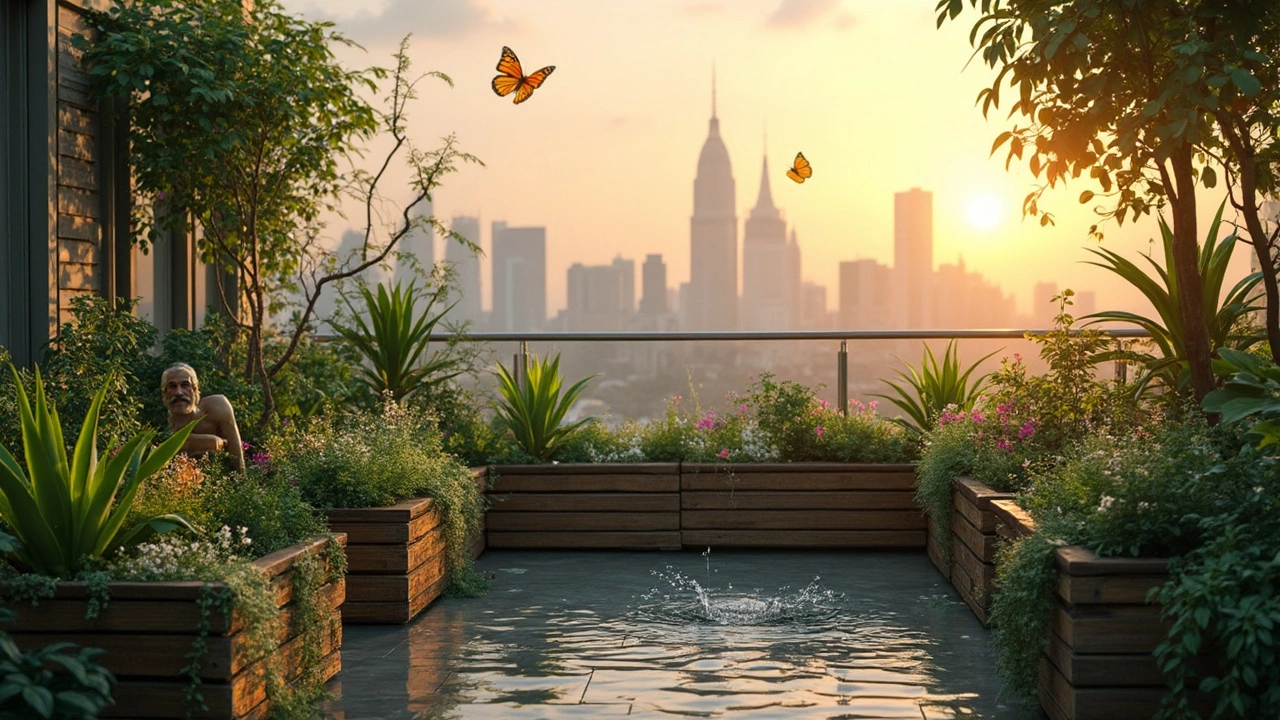
Tips for a Greener Garden
Making your garden more eco-friendly is easier than you think! You'll be doing your part for the planet while enjoying a lush garden. Here are some simple ways to get started.
1. Compost Like a Pro
Composting is a fantastic way to reduce waste and give your plants a nutrient boost. Use food scraps like fruit peels and coffee grounds, along with garden waste like leaves and cuttings, to create rich compost. Not only does this cut down on landfill waste, but your plants will thank you with vigorous growth.
2. Conserve Water
Water's precious, so it's smart to use it wisely. Collect rainwater in barrels to water your plants, or try drip irrigation systems that target roots directly, saving water and money. Another tip? Water early in the day or late afternoon to prevent evaporation.
3. Ditch the Chemicals
Chemical fertilizers might promise quick results, but they can harm the environment. Instead, choose organic options or make your own natural concoctions. For instance, a mixture of vinegar and soap effectively tackles weeds without harming the soil.
4. Go Plant Diverse
Mixing various plants not only makes your garden more beautiful, but it also helps control pests naturally. Grow a combination of flowers and herbs that attract beneficial insects like ladybugs, which naturally manage aphid populations.
5. Support Local Wildlife
Your garden can become a sanctuary for bees, butterflies, and birds. Include flowers like sunflowers and echinacea, which provide nectar for pollinators. Create small sand or mud areas where bees can safely collect nesting materials.
By taking these steps, you transform your outdoor space into a sustainable gardening showcase. You’ll enjoy not only the beauty but the satisfaction of nurturing an environment that gives back to nature!
